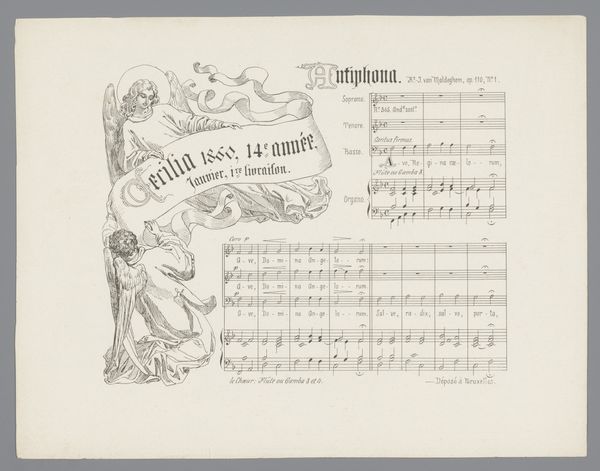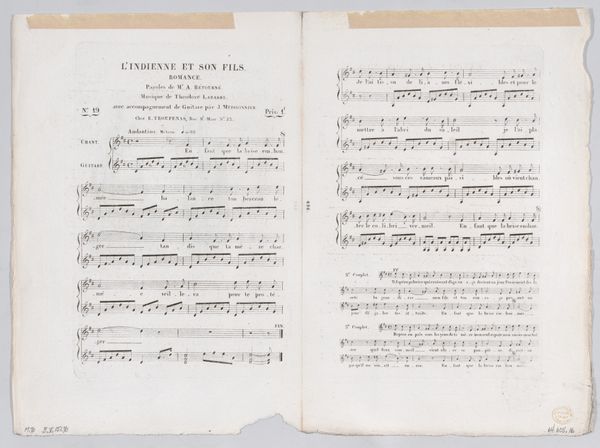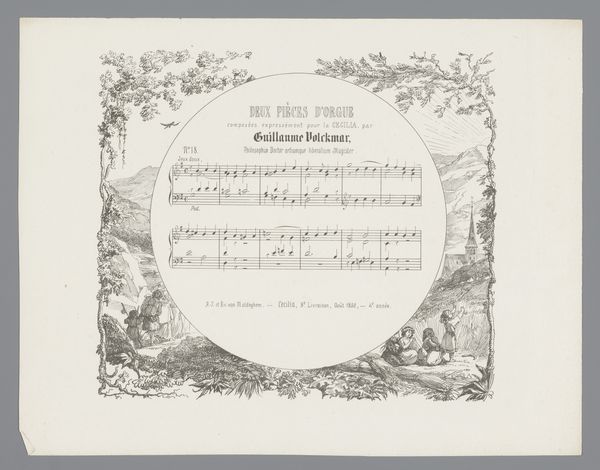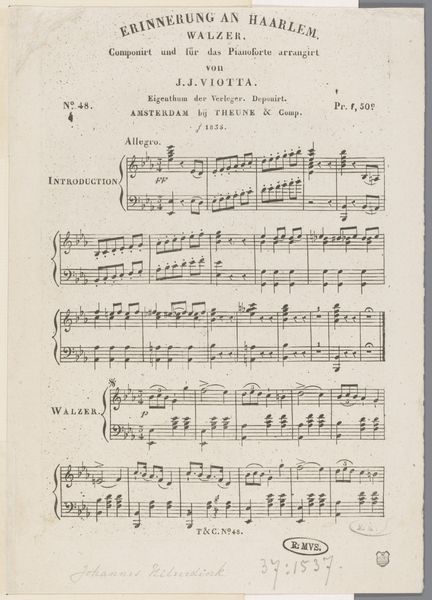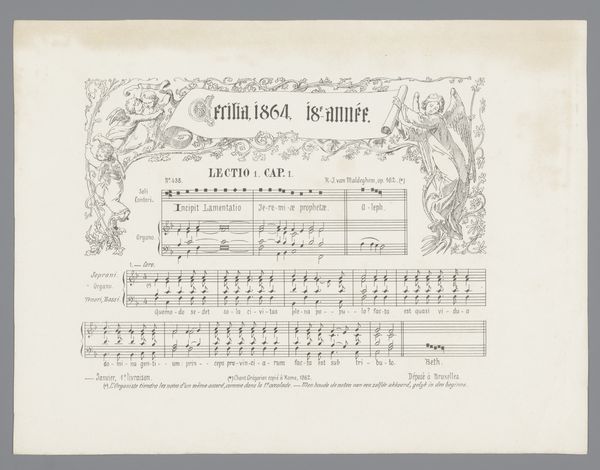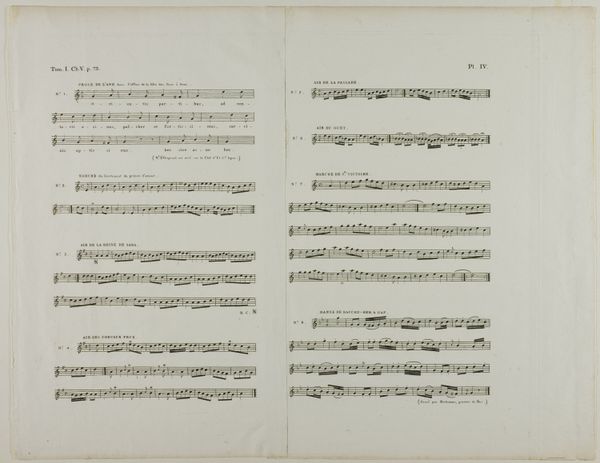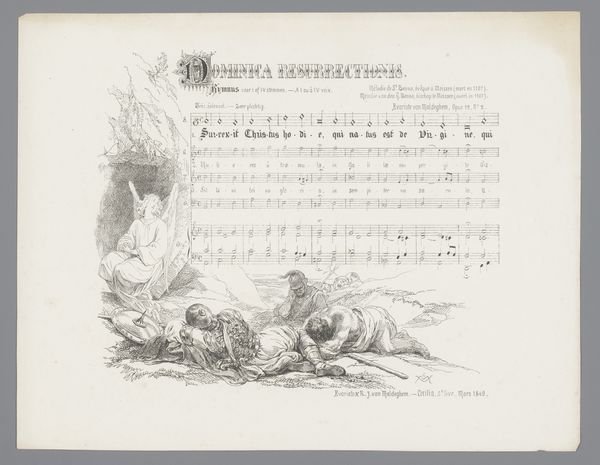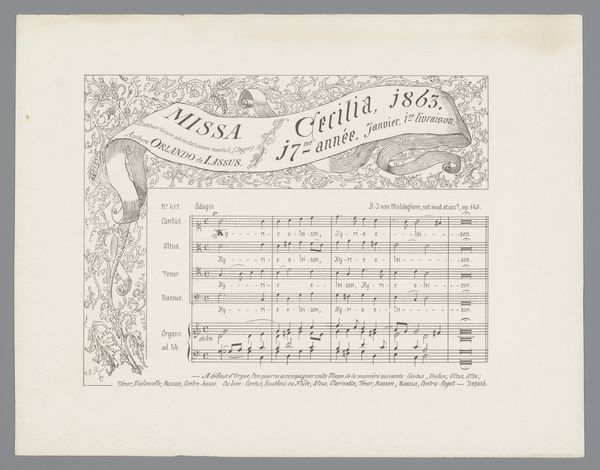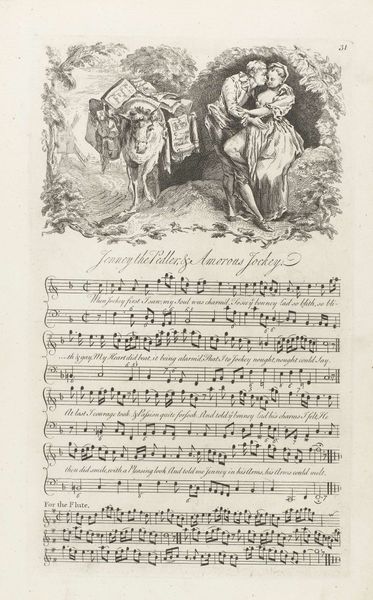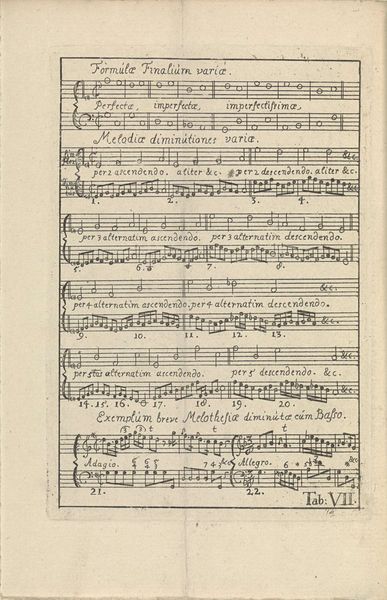
drawing, lithograph, print, paper, photography
#
portrait
#
drawing
#
lithograph
# print
#
landscape
#
paper
#
photography
#
academic-art
Dimensions: height 265 mm, width 347 mm
Copyright: Rijks Museum: Open Domain
Curator: This lithograph from 1850 by Eugène Van Maldeghem, titled "Three Figures in a Landscape Praying at a Marian Altar," presents a fascinating glimpse into the religious sensibilities of the era. Editor: The first thing that strikes me is the starkness of the lithograph. The scene has a kind of somber, reverent atmosphere, emphasized by the contrasting shades and detailed linework in the figures’ postures. It feels simultaneously intimate and publicly devotional. Curator: Precisely. The image of three figures in prayer, set against this austere landscape and before a symbolic Marian altar, taps into very deep wells of cultural memory, calling to mind centuries of artistic depictions of reverence and religious pilgrimage. Note how the architectural element of the altar is juxtaposed against the raw, imposing backdrop of the mountains; it’s a visual articulation of the sacred in the profane. Editor: Yes, the arrangement reinforces this concept. The Marian altar, crowned by the column, is framed by rugged nature. In my view, we cannot separate its placement from its wider context. Devotion isn’t separate; it exists within the complex historical and political reality of everyday lives and communities. Did this artwork have ties to contemporary activism? Curator: The visual symbols used are rather straightforward: devout supplication, nature in harmony with the divine... It appears to portray religious piety without specific regard to activist agendas. Perhaps the act of public devotion itself carried subtle connotations of resistance or solidarity? The mid-19th century was, after all, a turbulent time in Europe. Editor: Indeed. Even the figures themselves embody an idealized aesthetic prevalent in art during that period. Do the figures signal towards societal power dynamics reflected in their postures? This image seems poised to serve as propaganda and the means to shape political ideals of a society. Curator: The artist employs familiar motifs—ones embedded within our collective understanding of the relationship between the human and the divine. He's building upon established artistic traditions, not necessarily creating a subversive dialogue. Yet it’s the act of repetition and perpetuation that reveals underlying cultural forces, perhaps? Editor: Perhaps the power lies not in what is overtly stated, but in the subtle undercurrents and contradictions, making us question devotion. These sorts of investigations often leave a bigger, bolder mark in visual history. Curator: In looking again at Van Maldeghem's image, the simplicity of form, composition, and symbols reinforces the notion that its power rests precisely in its adherence to the recognizable motifs of worship. It serves as a reminder of shared faith. Editor: I concede that the artist sought an immersive way to deepen devotion among its intended audiences, in terms that reflected their world. To the contemporary activist's lens, however, this underscores how artistic visions shape historical and political forces.
Comments
No comments
Be the first to comment and join the conversation on the ultimate creative platform.
